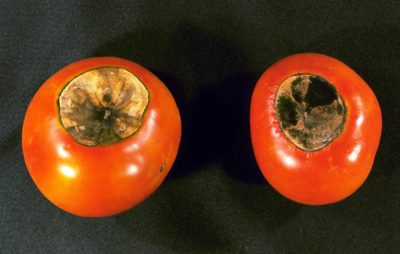Four common lawn and garden myths
It’s easy for gardeners to receive incorrect information. Here are common myths regarding evergreens, lawns, blossom end rot in tomatoes and deer-resistant plants.

After almost three decades of talking to new gardeners, old gardeners and non-gardeners, there are certain topics that come up each year. It’s the same scripts, just different actors. For most of these people, if the information comes from family and friends, they tend to believe the claim. Michigan State University Extension horticulture educators and Master Gardener hotlines talk to people each year on these topics. Here are four common gardening myths and their reality.
Myth: Evergreens turn the soil acidic and the older the evergreen, the fewer flowers or plants that can grow under them because of the acidity.
Reality: Evergreens grow best in acidic soils. These would have a soil pH of 6.0 to somewhat above. Evergreens can struggle to grow in alkaline, heavy or wet soils. As evergreens grow larger, the shade beneath them increases. The amount of shade increases as the years pass and the tree becomes larger. Trying to grow sun-loving plants under the branches of a large evergreen is a disaster in the making. It’s like reading a book on Custer’s Last Stand and not knowing how it will end. Most flowering plants require a great deal of energy to bloom. That energy comes from the sun to the plant. Choose shade-loving annuals, perennials or groundcovers to grow under evergreens.
Myth: Allowing lawn grass to go to seed in May and June can give you seeds to reinvigorate the lawn. You won’t have to buy seeds and it’s free.
Reality: Grass producing seeds at this time is usually Poa annua or annual bluegrass. This is iceberg lettuce or green apple in color, grows rapidly and tolerates all mowing heights. It grows vigorously in cool, moist weather, but hot weather in late June or July causes it to die. Those big patches of grass with seed heads are now unattractively tan, dead grass. Keep mowing regularly and don’t attempt to allow seeds to ripen. Fertilize periodically to strengthen perennial grasses. See turfgrass specialist Kevin Frank’s comments about this misguided approach to reseeding in the article, “Seedheads, hawkweed and slime mold in lawns.”
Myth: Blossom end rot on tomatoes is caused because there is not enough calcium in the soil. Adding egg shells and various other calcium sources will fix this.
Reality: Blossom end rot is technically a calcium problem, but it actually happens because there is not enough or not consistent water available for the plant to transport available calcium into the fruit. Almost all Michigan soils have more than adequate calcium available without the addition of anything. When there is not enough water, leaves are able to pull available water into themselves more successfully than tomato fruit. When the sun shines off the plant, moisture is given off the plant during transpiration which cools the plant and prevents burning. Soft tomato leaves have more transpiration going on than tomato fruit with tough, leathery skin. When there is not enough available ground moisture, the leaves win every time. When plants begin making fruit, there might be one or two defective fruit as the plant adjusts. Water is missing if this is happening more frequently.
Put water all the way around the plant and away from the stem, not just at the stem of the plant. Make sure soil is damp to a depth of at least 6 inches. If weather is exceptionally hot, it may be necessary to mulch the soil with straw to slow top evaporation.

Blossom end rot on tomato fruits. Photo credit: William M. Brown Jr., Bugwood.org
Myth: Planting deer-resistant plants on the edge of the garden will make deer and other critters go away and not venture in when they detect smelly plants.
Reality: Deer and other wildlife have not survived for millions of years by being food-stupid. They will brush by perimeter plants and snap off all the goodies like daylily buds and hosta leaves. Buy a deer repellant and selectively target susceptible plants. Read the label. Most of these products repel most mammals. Don’t waste repellants on plants they will not consume. Spearmint is deer-resistant but is highly invasive and some gardeners are happier with deer in their gardens than spearmint. Reapply repellants after a rain or after overhead watering.
Smart gardeners have already learned these gardening lessons in previous years. They also know to check websites ending in “.edu” for research-based information, like the Gardening in Michigan website (www.migarden.msu.edu). Not all the strange information comes from friends and relatives.



 Print
Print Email
Email




